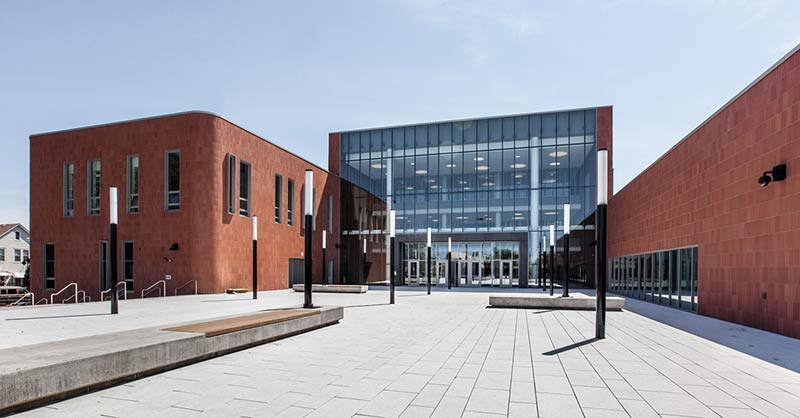
This urban high school is organized into three thematic components: body, mind and spirit, that relate to the various programs and activities within the school that compose the curriculum. The site is zoned according to these thematic areas and bars are created, housing the athletics (body), the academy classrooms and teaching spaces (mind), and the library, arts and music (spirit). The bars slide against each other to create outdoor spaces on the site, programmed for specific activities that work in conjunction with the buildings—entry courtyard, athletics fields, and reading garden.
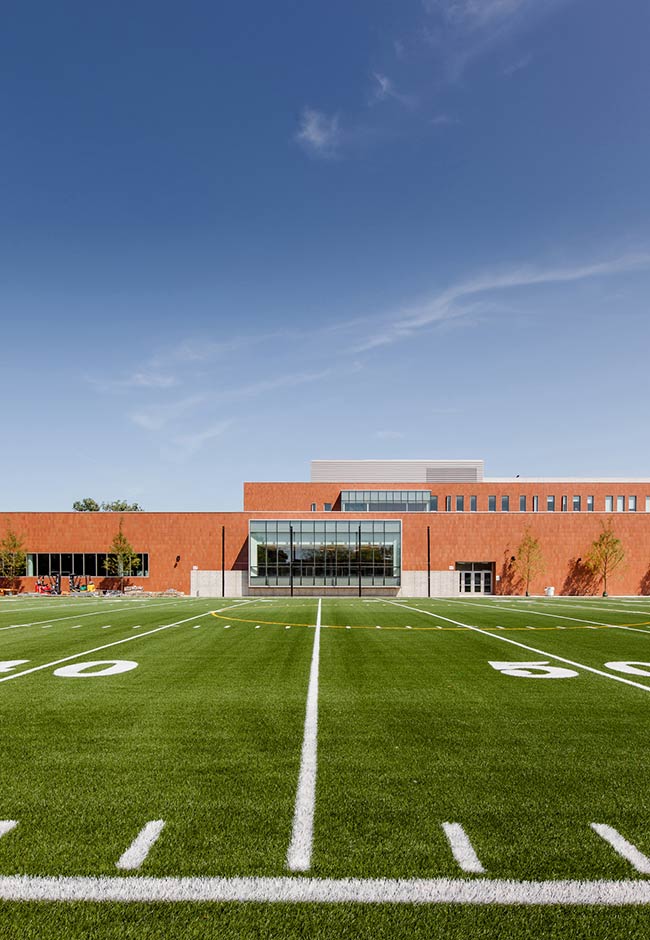
The three volumes (body, mind, and spirit) that comprise the school are created by one continuous wall that snakes back and forth through the site.
Throughout Chicago’s history the Chicago Public Schools have provided the communities in which they were built with a strong and clean presence. The schools have managed to stand the pass of time with dignity creating a solemn presence in their surrounding. These schools have been traditionally a representation of the time that they were designed in and the architectural trends that were present. It is within the boundaries of this tradition that we have approached the design of the Back of the Yards High School exterior envelope.
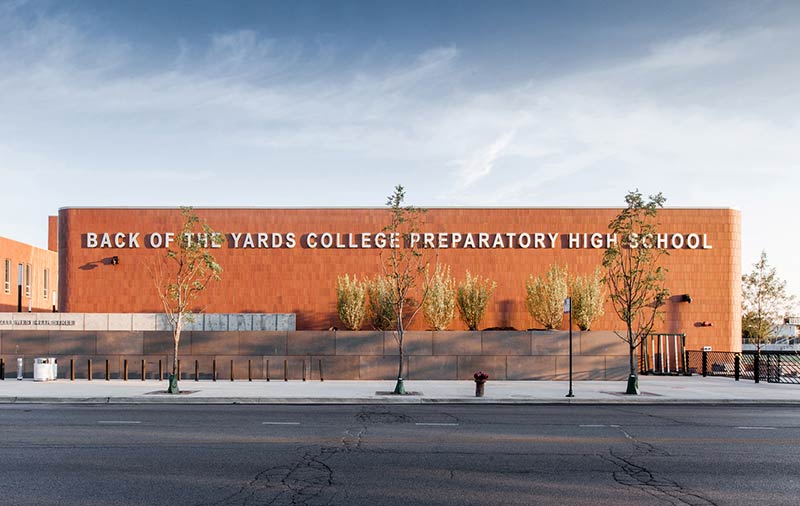
The use of brick, a noble and durable material, and a design commitment to a coherent rational expression of the building facades constitute the main ingredients of the final exterior articulation of the building.
Outdoor spaces include a main entry courtyard, a reading garden, an athletic fields. The academy bar slides back to create an entry courtyard between the arts and athletics volumes, forming the main entrance to the building. Here the students from both academies can socialize before school outside the main lobby with its security checkpoint; the commons areas for both academies look through the main atrium to the courtyard below. A secondary entry is located midway through the academic bar volume, to manage student entry into the school each day.
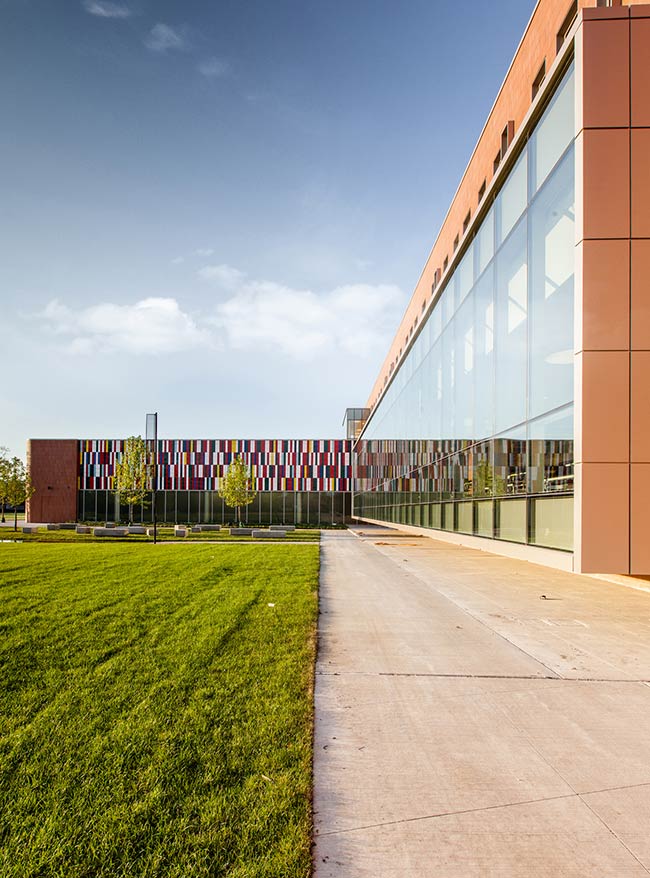
Adjacent to the library and leading up to the secondary entrance, is an elevated Reading Garden, which provides a shaded contemplative space for students and faculty to read or engage in casual conversation. This space forms the main entry zone for the library from the outside, which can be operated independently of the school, enhancing the facility’s utility to the community.
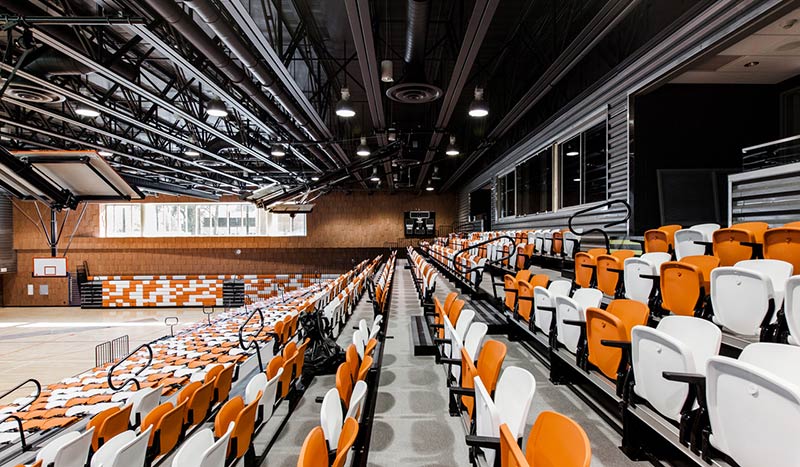
The Athletics bar consists of an adaptable gymnasium with bleacher seating for 1200, with a regulation basketball court, and two cross courts. There is raised performance stage at one end that enables the space to convert to an auditorium via a telescoping seating system that recesses into the wall opposite the stage. When in its performance configuration, the space seats 1200 people. Lockers, fitness rooms, athletic storage and other support spaces for the gymnasium are located on this level adjacent to the gym and below the main entry. A separate entrance is provided at the gym level so that the space can be used by the Park District in locations where the school is adjacent to a public park. Behind the gymnasium, and designed as an independent, “plug on” piece, is the natatorium and associated wet locker and support spaces. This too, is designed to be able to operate independent of the school, as a community amenity.
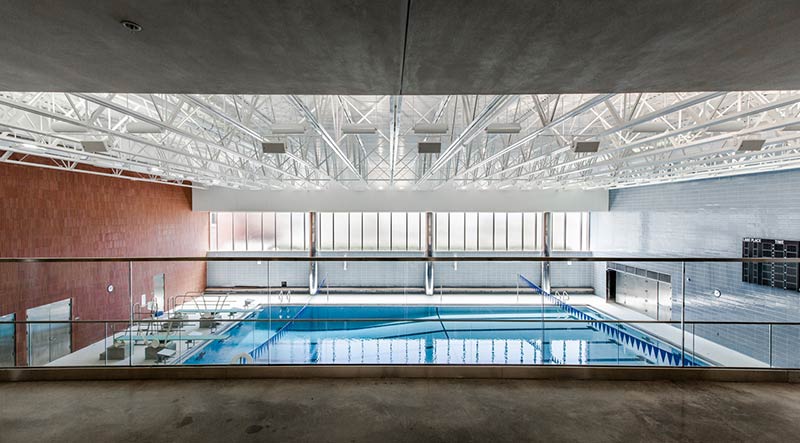
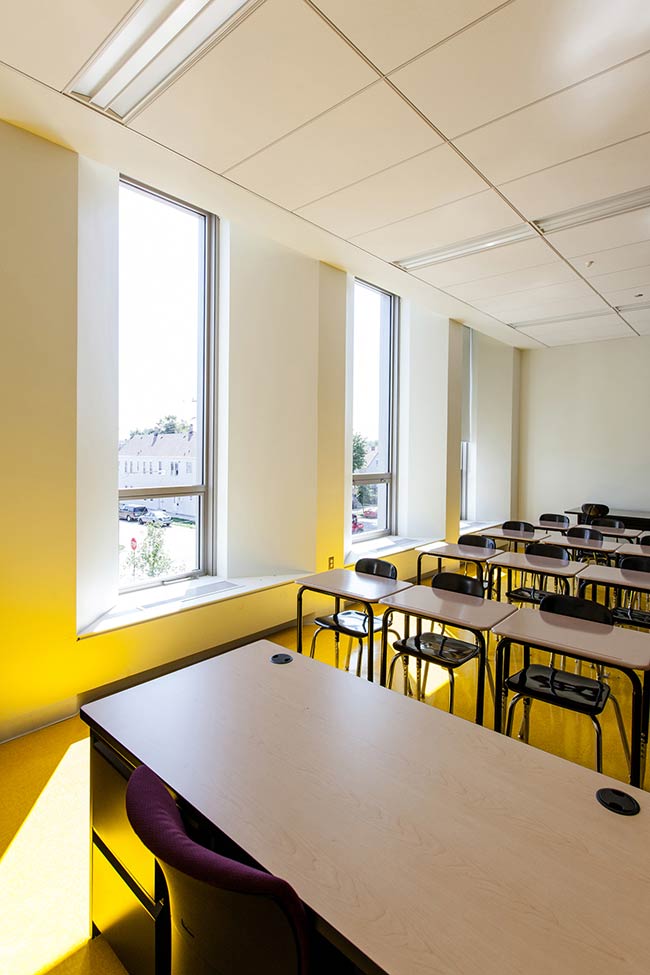
The Academics bar is subdivided into two academies of 600 students each, on floors two and three. Each academy shares a multilevel commons area linking the two floors, where students can congregate between classes. This three-story atrium at the main entry overlooks the entry courtyard below. On the main level below the academies are administrative offices for the two academies, kitchen/ server and dining spaces, and other support spaces.
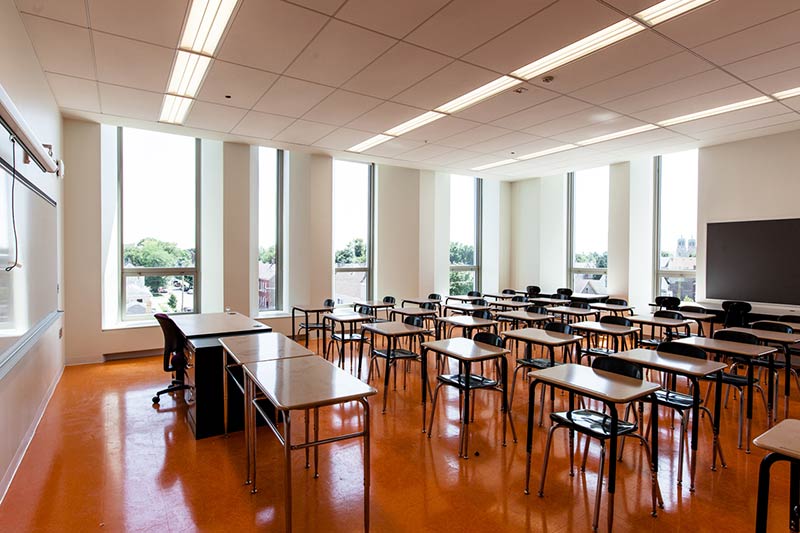
Looking at the multi-cultural Hispanic population of the neighborhood, a brightly colored glazed brick mural was created to serve as a school identity and capture the pulse of the vibrant community in which this school is located.
Project Details:
Location: 2111 West 47th Street Chicago, USA
Area: 215,000 sqf
Architects: STL Architects
Photographs: Ignacio Espigares


